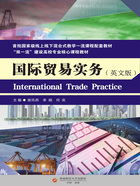
FYI
RCEP and Trade Development
RCEP is the abbreviation of Regional Comprehensive Economic Partnership. On November 15, 2020, ten ASEAN countries and China, Japan, South Korea, Australia and New Zealand officially signed RCEP agreement, which came into force on January 1, 2022.
RCEP’s total population, economic volume and trade volume account for 1/3 of the global total. It is the free trade agreement with the largest population, the largest economic and trade scale and the greatest development potential in the world so far. RCEP agreement covers a wide range of fields, such as tariff concessions, trade facilitation, opening policies for service trade and investment, temporary movement of natural persons, e-commerce and intellectual property protection. In terms of trade development, RCEP implements a strong tariff reduction policy. More than 90% of goods traded in the region will gradually achieve the goal of zero tariff. At the same time, the RCEP agreement adopts the regional cumulative rules of origin, which will lower the threshold for the products of member countries to enjoy trade preferences, encourage manufacturers to make more use of originating materials in the region and help member countries to form closer industrial chain and supply chain relationship in the region. In addition, RCEP agreement includes a series of high standard trade-related clauses on customs procedures, inspection and quarantine, technical standards, etc., to facilitate and promote trade among member countries. The above and other relevant arrangements will significantly reduce the cost of intra-regional trade and bring new trade increment to the region. According to the prediction of relevant research institutions, the cumulative increment of exports and imports of RCEP members will reach US $857.1 billion and US $983.7 billion respectively by 2035.